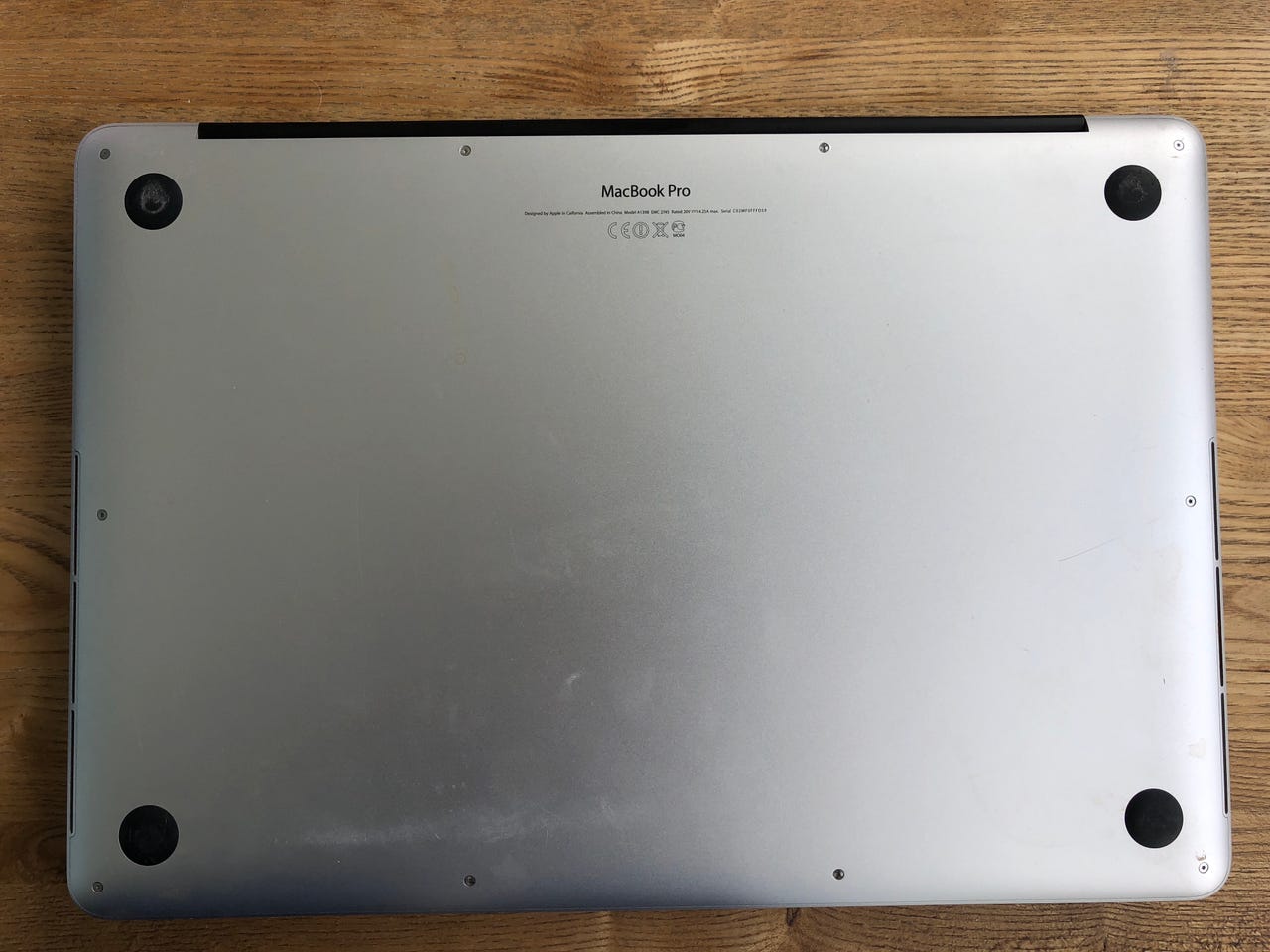How to easily fix an overheating MacBook


Time to see what's going on
The patient -- in this case a late-2013 15-inch MacBook Pro -- is ready.
The right tools for the job
Later MacBooks are held together with P5 pentalobe screws. Earlier MacBooks used small Phillips screws. Either way, get the right tools to remove them. Here I'm using my trusty iFixit Manta driver kit to make my way inside.
Remove the screws
Remove the screws holding down the back panel.
Here's one...
This is the larger of the two sizes holding this laptop together.
Keep them in order
Here's another... this one is tiny.
The MacBook Pro is held together with different length screws, so keep them in order!
And we're in!
An there's no shortage of dirt, dust, cat hair -- Mr Kitty! -- and random detritus inside.
Clogged fans
Here's the cause of the overheating -- clogged cooling fans.
The other one is worse
This one is a seriously clogged fan, and this dirt buildup will drastically hamper the air flow the system needs to keep cool.
Anti-static brush
Another example of having the right tool for the job. Here is an anti-static brush I used to brush away the dirt (another tool I got from the great folks at iFixit). It does a great job of getting into the nooks and crannies without damaging anything.
You can also use a blower to attack the dirt buildup. I don't recommend using canned air because the high-speed jet of air can damage delicately balanced fans, and I definitely don't recommend using a garage air compressor or blowing at it with your mouth.
I'd also recommend you find some way to prevent breathing in the dirt. A dust mask is a good idea, or just being upwind at the very least!
Carefully clean the fans
Take your time. Don't use excessive pressure. Let the brush do its work!
Clean the back panel too!
Don't forget to clean the back panel, along with any nooks and crannies you find.
Stop the screws working their way loose
This is not necessary, but I like to use a little bit of medium-strength threadlocking compound (here I'm using blue Loctite) to prevent the screws from working their way loose over time.
Just a dab
You only need a tiny dab of threadlocker. No need to go bananas with it.
And as for tightening up the screws, you only need finger pressure -- there's absolutely no need to go full animal on them because somethign expensive will break.
Mission accomplished!
The MacBook Pro is now all buttoned back up and running much cooler than before.
Here I'm using TG Pro to keep an eye on system temperatures.
Mission accomplished!